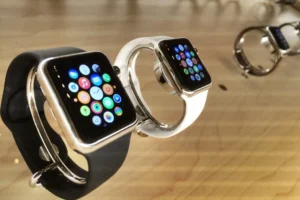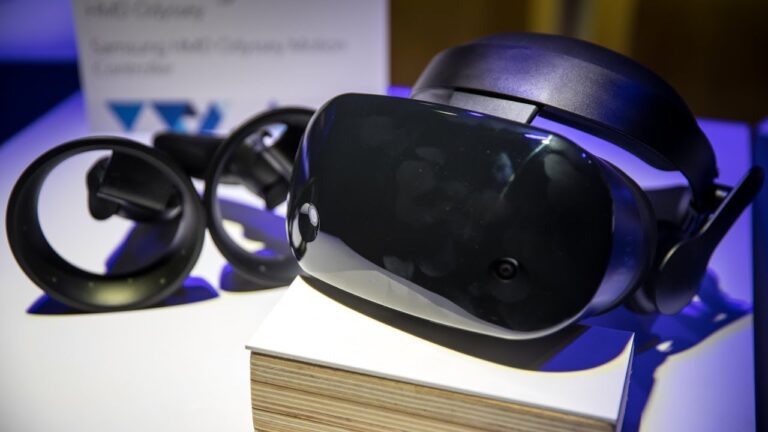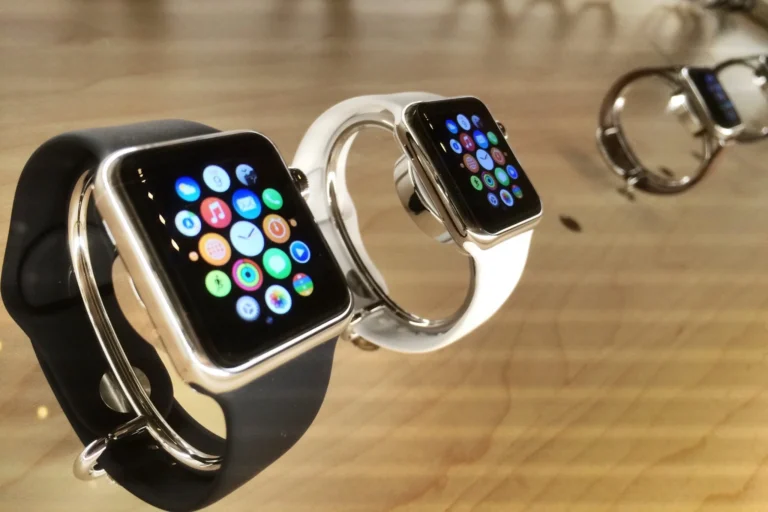Latest News
M4 칩이 탑재된 새로운 MacBook Air 모델은 iPhone SE 4 및 iPad 11보다 ‘이른’ 출시될 것으로 예상됩니다.
steve smith 10 months ago
Apple has always had a knack for surprising its customers with sleek and powerful new devices, and it seems the...
AI가 명품 시계 산업의 미래를 형성하는 방법
웨어러블 기술의 미래: 트렌드와 혁신
- All Posts
- Artificial Intelligence
- Cryptocurrency
- Entertainment
- Technology
- Back
- apps
- big-tech
- gadgets
- smartphone
- wearables
- Back
- AR/VR
- gaming
- gambling

Airtificial intelligence
2025년은 AI 에이전트의 해가 될 것이라고 Web3 경영진이 밝혔습니다.
Google Chrome은 AI를 사용하여 새로운 사기 감지 기능으로 페이지를 분석합니다.
‘AI 올림픽’ NeurIPS, 미-중 기술 경쟁 속에서 캐나다에서 새로운 장애물에 직면
화웨이 인공지능(AI) 프로세서에서 칩이 발견된 중국 기업이 미국으로부터 처벌을 받게 됐다.
Apple, 중국 iPhone AI 기능에 대해 ByteDance, Tencent와 논의 중
이탈리아, ChatGPT 개인 정보 보호 규칙 위반으로 OpenAI에 벌금 부과: AI 기업에 대한 경종
cryptocurrency
- All Posts
- Cryptocurrency

The cryptocurrency market is as dynamic as ever, with Bitcoin often stealing the spotlight. However, altcoins like Cardano (ADA) and...
Latest Guide
비트코인, 다시 10만 달러 테스트: 암호화폐의 미래에 어떤 의미가 있나요?
Bitcoin has made headlines once again as it tests the coveted $100,000 mark. The world’s first cryptocurrency, which has long been a symbol of both volatility and potential, continues to captivate the financial world. For many investors, the question on everyone’s mind is: Will Bitcoin finally break through the $100K barrier, and what will this mean for the future of digital currencies? The Rise of Bitcoin to $100K Bitcoin has seen a remarkable journey since its inception in 2009. Over the years, it has faced numerous challenges, from regulatory scrutiny to market corrections, but its underlying technology—blockchain—has continued to prove its potential. As of late 2024, Bitcoin has experienced a strong surge in value, testing the $100,000 price point once again. This climb is not without reason. Several factors are contributing to Bitcoin’s upward momentum, including institutional adoption, growing acceptance in mainstream finance, and increasing interest from retail investors. The integration of Bitcoin into financial portfolios as a hedge against inflation and economic uncertainty has driven its demand, further fueling its price rise. Institutional Adoption and Mainstream Acceptance One of the key drivers behind Bitcoin’s push towards $100K is the increasing institutional adoption. Major financial institutions, such as banks and hedge funds, are now treating Bitcoin as a legitimate asset class. Many have even added it to their balance sheets, viewing it as a store of value akin to gold. This institutional validation has sparked a wave of confidence in the market, helping to propel Bitcoin toward new heights. Additionally, Bitcoin is gradually being integrated into traditional financial systems. With the emergence of Bitcoin ETFs, futures contracts, and payment platforms like PayPal accepting Bitcoin, the cryptocurrency is becoming more accessible to the average investor. This mainstream acceptance has helped mitigate some of the volatility that has traditionally been associated with Bitcoin, making it a more attractive investment option. The Role of Inflation and Economic Uncertainty Another contributing factor to Bitcoin’s rise is the ongoing economic uncertainty around the world. Central banks around the globe have been printing money at unprecedented rates to combat inflation, leading many to look for alternative stores of value. Bitcoin, with its fixed supply of 21 million coins, is often seen as a hedge against inflation, providing a sense of security in uncertain times. As inflation continues to erode the value of fiat currencies, Bitcoin’s limited supply and decentralized nature make it an appealing option for those seeking protection from inflationary pressures. This has led to increased demand from both institutional investors and individual buyers, further driving its price upwards. The Road Ahead: Will Bitcoin Hit $100K? While Bitcoin’s recent surge is undoubtedly impressive, the road to $100,000 is not without its hurdles. The cryptocurrency market is notoriously volatile, and Bitcoin’s price can fluctuate rapidly in response to news, regulatory changes, and shifts in market sentiment. However, the growing institutional involvement and acceptance of Bitcoin as a legitimate asset class provide a strong foundation for its future growth. Experts remain divided on whether Bitcoin will reach and sustain the $100K level. Some believe that Bitcoin’s price could surpass $100K in the near future, driven by continued demand and adoption. Others caution that regulatory hurdles and market corrections could create obstacles for Bitcoin’s climb to $100K. The Impact on the Broader Crypto Market Bitcoin’s rise to $100,000 would not only be a significant milestone for the cryptocurrency itself but could also have a ripple effect on the broader crypto market. As the largest and most well-known cryptocurrency, Bitcoin often leads the way for other digital assets. A surge in Bitcoin’s price could result in increased attention on other cryptocurrencies, such as Ethereum, Binance Coin, and even smaller altcoins. Moreover, the success of Bitcoin could attract more developers and innovators to the blockchain space, leading to the creation of new decentralized applications (dApps), financial services, and use cases for blockchain technology. The broader adoption of blockchain could lead to greater integration of cryptocurrency into the global economy, further solidifying its position as an alternative asset class. Conclusion Bitcoin testing $100K again is a testament to its resilience and growing acceptance in the financial world. While its path to $100,000 may face challenges, its underlying technology and use cases continue to gain traction. As institutional investors, mainstream platforms, and retail buyers continue to embrace Bitcoin, the future of the cryptocurrency market looks promising. Whether or not Bitcoin hits the $100K mark in the immediate future remains to be seen, but one thing is clear: Bitcoin’s journey is far from over. For investors, this could be the beginning of a new era for digital assets—one where Bitcoin plays a central role in the global economy.
Technology
- All Posts
- Technology

Apple has always had a knack for surprising its customers with sleek and powerful new devices, and it seems the...
Latest Guide
웨어러블 기술의 미래: 트렌드와 혁신
Wearable technology has come a long way, from the first fitness trackers to the sleek and multifunctional smartwatches and augmented reality (AR) glasses of today. As we move into a new era of innovation, wearable tech is expected to evolve in ways that will transform our daily lives, from enhancing health and fitness to improving connectivity and productivity. In this article, we will explore the future of wearable technology, highlighting the trends and innovations that will shape the next generation of devices. 1. Health and Wellness Integration Advanced Health Monitoring Health and wellness have always been at the forefront of wearable technology, but the next generation of devices will bring even more sophisticated capabilities. While wearables like Apple Watch and Fitbit already track basic metrics such as heart rate, sleep, and activity levels, future devices will go far beyond. Wearable Diagnostics In the future, wearables could become diagnostic tools. Devices might integrate with healthcare systems to provide in-depth health assessments, identifying potential risks and suggesting lifestyle adjustments. 2. Augmented Reality (AR) and Virtual Reality (VR) AR Glasses While companies like Meta and Microsoft have already introduced AR glasses, the technology is still in its early stages. In the coming years, expect to see AR glasses that offer seamless integration with everyday life. These glasses could display real-time information on everything from navigation directions to text messages. Key developments in AR for wearables include: VR for Fitness and Entertainment As VR technology advances, we will likely see wearables integrated with VR headsets for more immersive experiences in gaming, education, and fitness. These devices will offer deeper immersion in virtual worlds, allowing for hands-on training, simulations, and entertainment. 3. Fashion and Personalization Smart Fabrics The future of wearables won’t just be about gadgets; it will also involve smart clothing. Smart fabrics and textiles will embed sensors directly into clothing, offering a host of features like body temperature regulation, muscle recovery support, and even heart rate tracking. For example: Customization Through AI Future wearables will feature even more personalization, powered by AI. Devices will adapt to a user’s behavior and preferences, offering insights into health, fitness, and productivity that are tailored to the individual. AI will learn from the user’s daily routines, adapting features and notifications accordingly. 4. Improved Connectivity 5G and Beyond As 5G networks continue to expand, wearables will become even more connected. High-speed internet and ultra-low latency will make it easier for devices to interact with each other and access cloud-based services in real time. This means wearables will be able to stream high-quality media, deliver real-time data analysis, and even support remote health monitoring for healthcare professionals. Advanced Biometric Authentication The future of wearables will likely feature more advanced biometric authentication methods. Smartwatches, rings, or even glasses could incorporate facial recognition, voice recognition, and fingerprint scanning to offer enhanced security for payments, digital access, and personal data. 5. Energy Efficiency and Sustainability Battery Life and Charging Innovations One of the biggest challenges for wearable tech has been battery life. Future devices will likely feature longer battery life and faster charging capabilities, possibly through more efficient solar charging or wireless charging. This could make wearables more convenient and reliable, reducing the need for frequent charging. Sustainability With growing concerns about e-waste, the future of wearable technology will focus on sustainable materials and eco-friendly designs. Expect to see wearables made from recyclable and biodegradable materials, reducing their environmental impact. 6. Security and Privacy As wearables collect increasingly sensitive personal data, such as health metrics and location information, privacy and data security will become even more important. Future wearables will likely come equipped with advanced encryption and privacy-focused features to ensure that personal data is protected at all times. Conclusion: The Future of Wearable Technology The future of wearable technology is incredibly promising, with advancements in health monitoring, AR/VR, fashion, and connectivity all on the horizon. As the industry continues to innovate, we can expect wearables to become not only essential tools for daily living but also extensions of our own capabilities. The next generation of wearables will offer more than just convenience; they will help us monitor our health, improve productivity, and engage with the world in entirely new ways. Whether you’re a fitness enthusiast, tech lover, or simply someone looking for greater convenience, the future of wearable technology is something to look forward to.
AR / VR
Smartphone
iOS 19가 이 iPhone과 호환된다는 소문: 알아야 할 사항
Wearables
AI가 명품 시계 산업의 미래를 형성하는 방법
웨어러블 기술의 미래: 트렌드와 혁신
Latest Stories













































